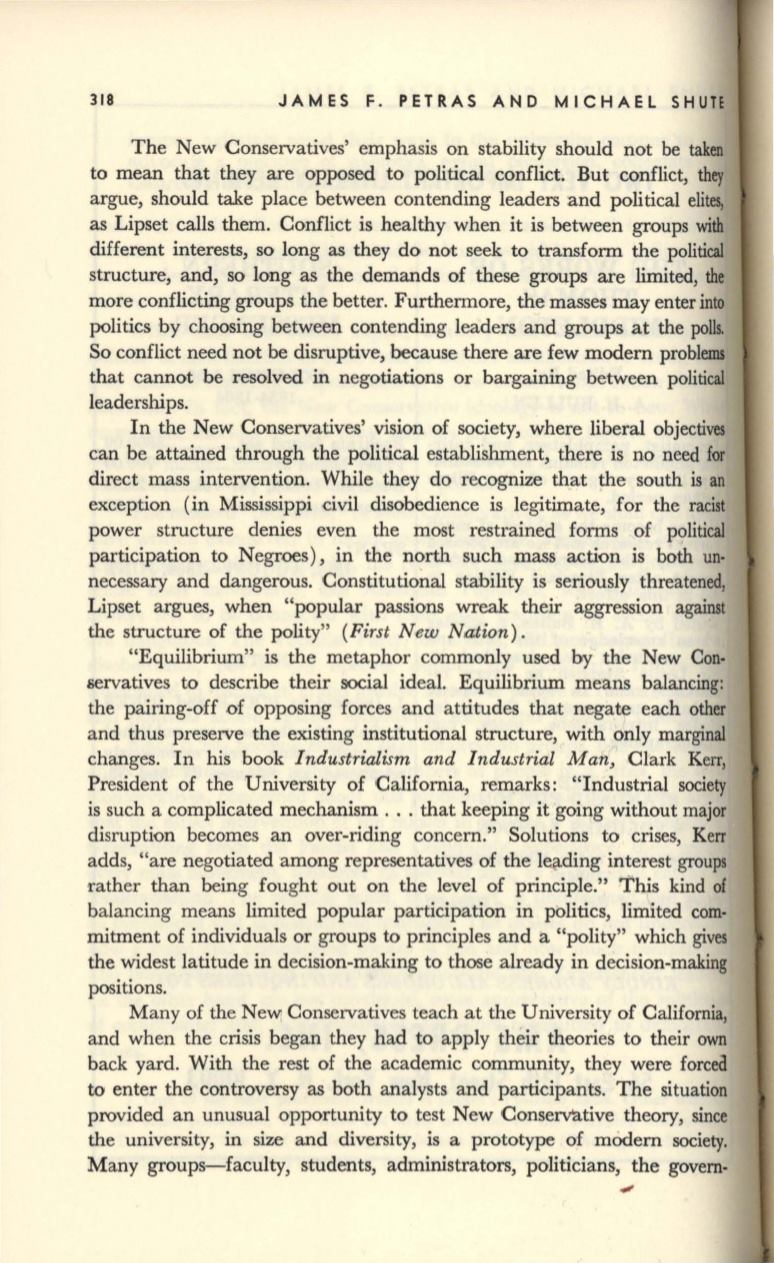
318
JAMES F. PETRAS AND MICHAEL SHUTE
The New Conservatives' emphasis on stability should not be
taken
to mean that they are opposed to political conflict. But conflict,
they
argue, should take place between contending leaders and political elites,
as Lipset calls them. Conflict is healthy when it is between groups
with
different interests, so long as they do not seek to transform the political
structure, and, so long as the demands of these groups are limited,
the
more conflicting groups the better. Furthermore, the masses may enter into
politics by choosing between contending leaders and groups at the
polls.
So conflict need not be disruptive, because there are few modern problema
that cannot be resolved in negotiations or bargaining between political
leaderships.
In the New Conservatives' vision of society, where liberal objectives
can be attained through the political establishment, there is no need
fa
direct mass intervention. While they do recognize that the south is
an
exception (in Mississippi civil disobedience is legitimate, for the
racist
power structure denies even the most restrained forms of political
participation to Negroes), in the north such mass action is
both
un–
necessary and dangerous. Constitutional stability is seriously threatened,
Lipset argues, when "popular passions wreak their aggression
against
the structure of the polity" (
First New Nation).
"Equilibrium" is the metaphor commonly used
by
the New Con–
servatives to describe their social ideal. Equilibrium means balancing:
the pairing-off of opposing forces and attitudes that negate each
other
and thus preserve the existing institutional structure, with only marginal
changes. In his book
Industrialism and Industrial Man,
Clark Kerr,
President of the University of California, remarks: "Industrial society
is such a complicated mechanism ... that keeping it going without major
disruption becomes an over-riding concern." Solutions to crises, Kerr
adds, "are negotiated among representatives of the
l~ding
interest groups
rather than being fought out on the level of principle." 'this kind
of
balancing means limited popular participation in pblitics, limited com–
mitment of individuals or groups to principles and a "polity" which gives
the widest latitude in decision-making to those already in decision-making
positions.
Many of the New Conservatives teach at the University of California,
and when the crisis began they had to apply their theories to their own
back yard. With the rest of the academic community, they were forcea
to enter the controversy as both analysts and participants. The situation
provided an unusual opportunity to test New Conserv'ative theory, since
the university, in size and diversity, is a prototype of mOdern society.
Many groups-faculty, students, administrators, politicians, the govern-
."


